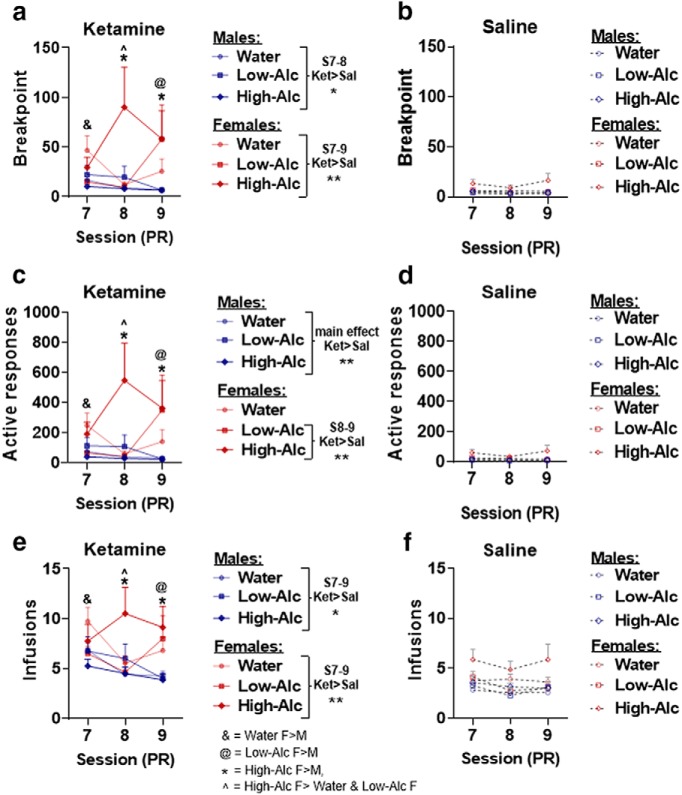Figure 3.
Motivation to self-administer ketamine is not maintained in either sex, but high-alcohol intake female rats show enhanced motivation during the second session. a, b, PR break-point data in rats that self-administered ketamine and saline. In the ketamine groups, water-intake females (n = 11) have significantly higher break points than males on the first session (SA session 7). High-alcohol intake females (n = 7) have significantly increased break points in SA sessions 8–9, while low-alcohol intake females (n = 8) have increased break points in SA session 9. The male groups that self-administered ketamine have increased break points compared with saline only for the first two sessions (SA sessions 8–9) before they decrease, whereas water-intake females are only significantly higher than saline in SA session 7, low-alcohol only in SA session 9, and high-alcohol in SA sessions 8 and 9. c, d, Number of active responses during the PR sessions for rats that self-administered ketamine or saline. Data from active responses parallel break-point data with the exception that water-intake females that self-administered ketamine did not show differences from the saline groups. e, f, Number of ketamine or saline infusions under a PR schedule of reinforcement. Sessions ended after failure to achieve the next ratio in a 1 h time period. Males and females self-administered significantly more ketamine infusions compared with saline across all three sessions. High-alcohol intake females took significantly higher rates of ketamine compared with low-alcohol or water-intake females. *, #, &, @, ^ p < 0.05 symbols represent either within- or between-sex differences (indicated in e). Data are represented as the mean ± SEM break point and ketamine (0.5 mg/kg/infusion) or saline infusions. Saline self-administration male and female rats with water intake (n = 11), low alcohol intake (n = 8), and high alcohol intake (n = 7). **p < 0.01.

